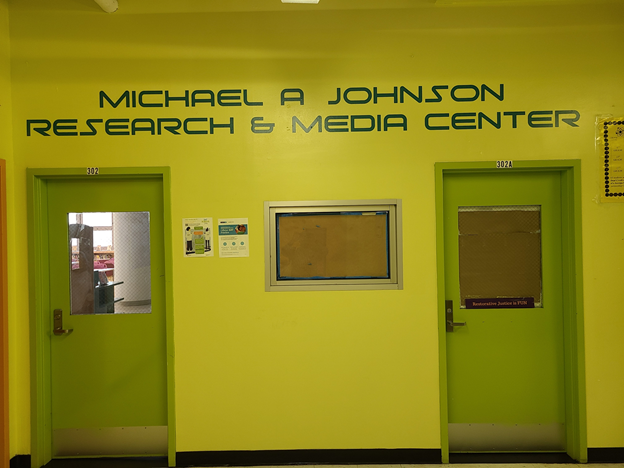What is this thing called: “extra-curricular”? And is there a national apartheid system of quality when it comes to after/out of school activities?
Over the years I’ve had a very “strained” philosophical relationship with the word “extra-curricular” (thus the insistence of centering the term between two quotation marks). In part because its usage is based on a terrible misunderstanding of: what actually constitutes a school’s curriculum. As I always tell school administrators: A school’s clubs, teams, and non-classroom activities that take place before, after, during the school day and on weekends; are very much reflections, products and producers of the school’s approach to curriculum.
There is an obvious and definitive national “enrichment-quality divide” when you compare “extra-curricular” activities in many different schools; based on wealth, race and societal entitlement. This is unfortunate, because my experience is that even those students who languish in academically underperforming schools, they are still interested in things like: Robotics, Chess, Creative Writing, STEM, Drama, Law and Debate, Art, Sculpture, Photography, Dance, etc.; and besides, all of the students in these academically underperforming schools are not underperforming! What programs are available for the non- academically underperforming students? You can learn so much about a school by simply noting the type and academic-related quality of the “out of classroom” activities and experiences they offer their students.
Too many poor kids in this nation get a lot of remedial, but very little enrichment programs. In public education we operate with a well-meaning, but inadequately bad funding formula, that essentially rewards schools, financially for academic failure. As a principal of two very successful title 1 high schools, I found in both cases I was forced to “go in deep, hard and wide” to raise funds and find resources outside of my budget allocation for enrichment programs like Art, Dance, Music, Shakespeare Scholars club, STEM programs, STEM teams and competitions, college tours, special trips, etc. I was also fortunate to have “unofficial” help from many central district office personnel in order to pull off some of this resource acquisition (I will just leave that there without further explanation!)
In high schools these “extra-curricular” activities take on an even greater significance. Students are (should be) seeking to strengthen and enhance their post high school employment, college admissions, and college scholarships profiles. Part of this is done through the choice of clubs, internships, teams, electives, advance classes, and AP courses. (Which is why I always warn 9th graders: This is another reason to not fail any classes, because you will later need some “strategic space” in your transcript to build up your post-high school plans and opportunities profiles.) An important way of enhancing a student’s employment, college admissions-scholarships profile; is through the school’s offerings of “extra-curricular” activities. I have even warned some of my strongest and most committed STEM students, that they need to think about “rounding out” and balancing their college scholarship-admission’s profile by joining the soccer/volleyball team; the band, art, drama, poetry or dance clubs.
Interestingly, too many male students of color, will often have the “best”: “Out of school” and “extra-curricular” portfolio building plans for the pursuit of a professional sports career, even as the odds are overwhelming against the majority of those who seek this path. Many of these students actually have a well-organized adult led-organized-coached “career-path-plan” that starts in elementary school (i.e. Pop Warner Football). The problem for the majority of these students who don’t make it to the “Pros”, is that these plans more often than not, see academics more as an inconvenience rather than as a joint partner! But for those students who are good at, and want to pursue a: STEM, Astronomy, Dance, Creative Writing, Sculpture, History, Anthropology, Paleontology (even if they don’t know the word, they know they are fascinated by dinosaurs!), Forensic science, and Meteorology, etc.; where are the developmental programs? Students with interest and talents in the before mentioned areas, could also benefit from early and well organized: guidance, coaching, mentoring and support system; starting in the elementary, middle and high school years!
I hope the National Super STEM Competition initiative, along with the great work being done by the folks at FIRST Robotics (http://www.firstinspires.org/robotics/frc ) can start to expand and enhance the too often limited “extra-curricular” activities-teams-programs conversations that presently exist at too many of our majority Black and Latino schools. My experience is that students don’t know that they like something, until they are exposed to it! And so, let’s get the word out on:
A NATIONAL SUPER STEM COMPETITION!
“The first annual United States Super STEM Competition (USSSC) is a new educational competitive event happening in 2017 to challenge the creative mind of all middle school, high school and college students. The main focus for the 2017 USSSC is to provide an opportunity for students to demonstrate their innovative knowledge and skills by competing towards one goal …success! It is easy to enter….simply register for any of 15 divisions online, build the project based on the official rules, then ship it to us for a chance to win awards for your school, students or classroom.” http://www.unitedstatessuperstemcompetition.org/ (Note: This competition is open to all US public, private, vocational, charter, magnet and home-schooled students.)
